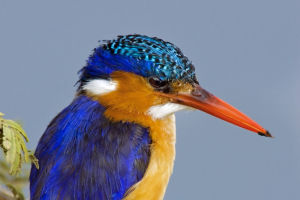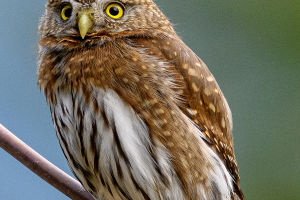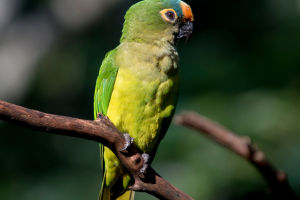Birds are essential components of the natural ecosystem, serving as valuable resources for art, scientific research, teaching, entertainment, and the economy. However, they play a far more significant role in maintaining ecological balance and beautifying the natural environment.
Birds predate insects and small rodents, playing an essential part in maintaining ecological balance. Insectivorous birds in forest ecosystems play a vital role in controlling pest populations. The absence of birds, or the absence of a particular species, can have severe consequences for the natural environment.
Birds are highly sensitive to changes in the environment and respond quickly, making them ideal indicators of environmental quality. Scientists often use birds as indicators of environmental quality, especially when assessing whether a region's ecological indicators are adequate.
Birds also play an essential role in promoting agricultural and forestry production. For example, a cuckoo can consume more than 50,000 pine caterpillars per year, while a pair of woodpeckers can protect 500 acres of trees from pests, making them ideal "forest guards."
Swallows are effective in controlling locust populations, eating up to 3 kilometers of them in a single summer. Additionally, a single owl can prey on over 1,000 voles in a single summer, making them effective at reducing rodent populations.
Birds such as cuckoos and thrushes that feed on insects can help control insect pests, reducing the need for pesticides and, in turn, lessening the risk of pesticide residue on people's health and the environment.
Vultures also play a crucial role in eliminating environmental pollution caused by diseased animals and rotting carcasses.
Birds have a unique function in inspiring human innovation, providing principles and blueprints for searching for ideal technological devices or means of transportation.
Scientists study the flight of birds to invent flying machines, while their physiological structures and functions provide research topics for bionic science, including the development of mechanical systems, instruments and equipment, building structures, and technological processes.
Examples of such innovations include the "pigeon eye radar system".
Unfortunately, bird resources are declining due to the impact of human economic activities, the increase of population, the decrease of forest area year by year, the destruction of forest ecology, and environmental pollution.
Since the sixteenth century, 139 bird species have become extinct, with most of them caused by human hunting. One kind of bird is still extinct every year, with 90 kinds of birds on the verge of extinction, and 410 kinds of birds in danger of extinction.
Birds are an indispensable part of the natural ecosystem, playing a vital role in maintaining ecological balance, promoting agricultural and forestry production, ensuring public health and environmental sanitation, and inspiring human innovation.
It's essential to protect these invaluable natural resources to maintain the ecological balance and sustain the natural environment for future generations.


